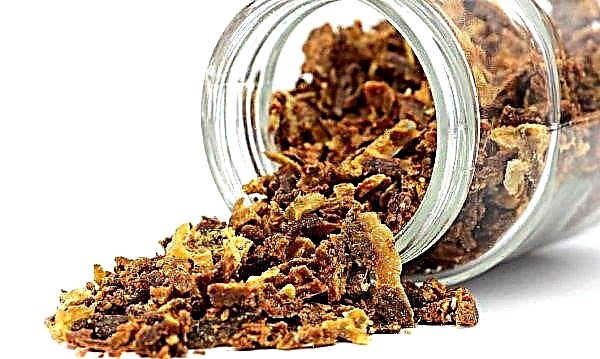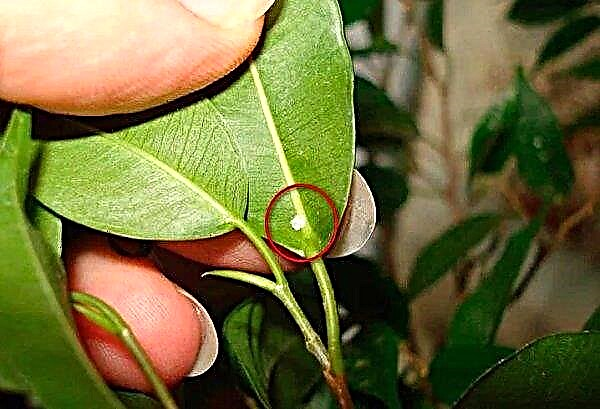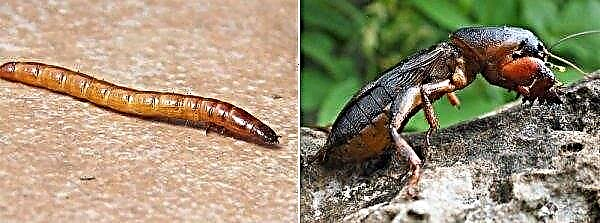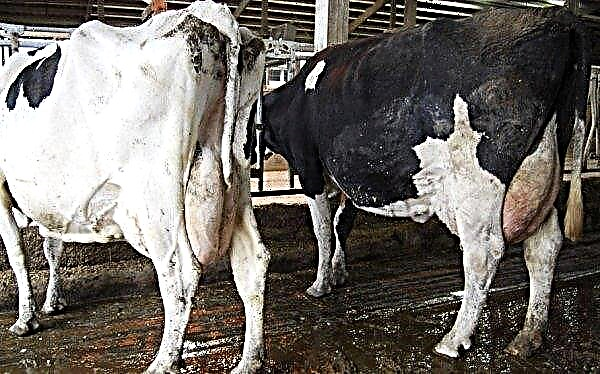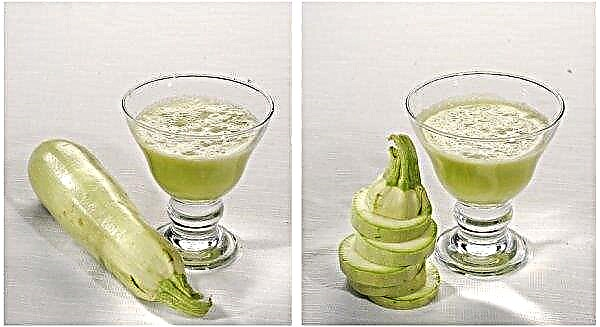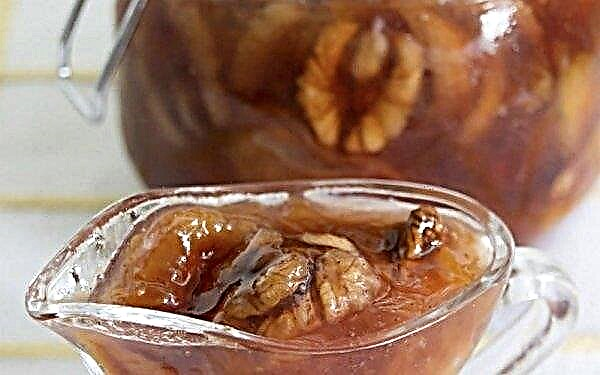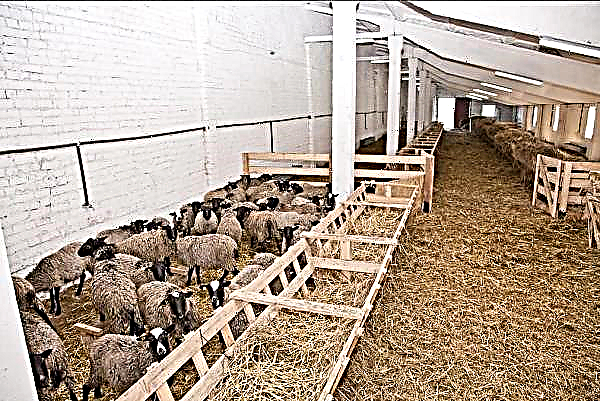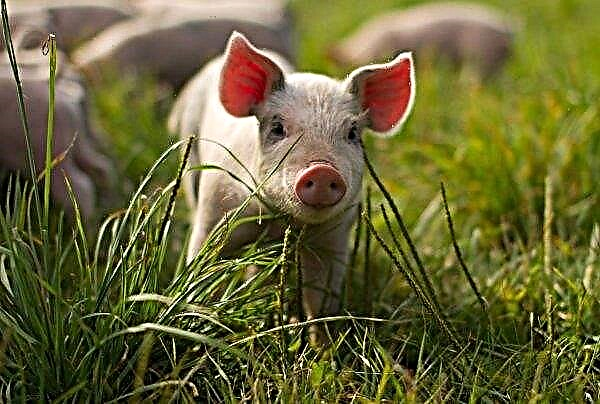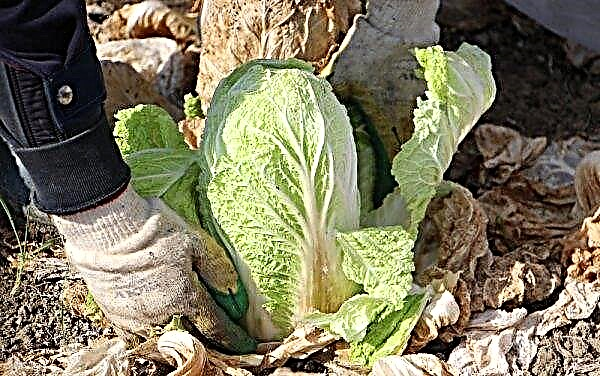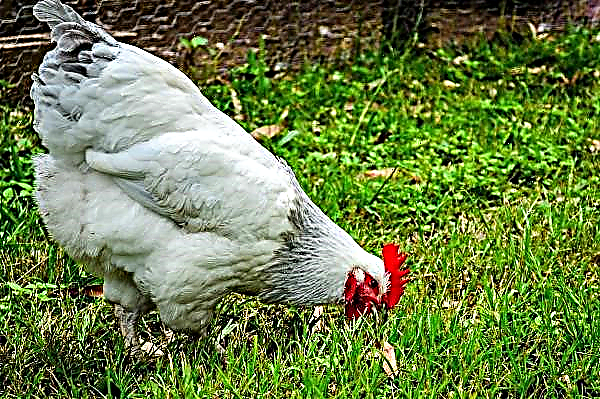Hybrid varieties of tomatoes are appreciated by vegetable growers for their high productivity and strong immunity. The “Khali-Gali” tomato, bred by breeders from Siberia, is distinguished by the same qualities.
Grade description
Recognition of the variety and license for it were obtained by developers in 2003. Despite their youth, Hali-Gali tomatoes managed to gain popularity.
The main characteristics of the variety:
- A low bush of 80–90 cm, suitable for growing in greenhouses and in open beds. In cold regions for the first time you will need shelter with a film.
- The stems and shoots are strong, leafy plates of green color, triangular, slightly elongated, large.
- Harvest ripens early, in 85-105 days, depending on the climate of the region.
- The fruits are round in shape with a small sharp protrusion in the lower part, the color is bright red, weight 150-200 g.
- The flesh is sweet and sour in taste, with a dense skin and 2-3 seed chambers.
- The inflorescence is laid over the 5-7th leaf.
- In the greenhouse, you can collect up to 15 kg of fruits per 1 sq. Km. m, and from open beds - 10 kg.
- It has good transportability indicators.
- Resistant to insect attacks and fungal infections.
- Delicious juice is obtained from juicy pulp, fresh and canned salads, thick pasta.

Advantages and disadvantages
Gardeners give a lot of positive feedback about the hybrid, but they also mention some of the minuses of the variety.
- Grade advantages:
- early ripening;
- good immunity;
- pleasant taste;
- fruit juiciness;
- stable fruiting;
- suitable for long transportation;
- well kept.
- The disadvantages of the variety:
- requires frequent fertilizer;
- Needs stepsoning and support;
- average yields.
Sowing seeds for seedlings
Due to the low height of the bush, these tomatoes can be bred on the balcony. The variety is grown in seedlings.
Optimal timing
Khali-Gali is a hybrid variety, and this means that seeds for each sowing must be purchased. Sowing is carried out in late February or early March.
Did you know? In Greece, on the island of Santorini, on the territory of a former tomato paste factory, there is a museum telling the story of fruit processing. The story begins with the transportation of crops on donkeys from the plantation, and ends with the loading of goods on ships for transportation by sea.
Soil mix
Properly selected components of the soil mixture are the key to the health of seedlings and quick rooting. Tomatoes love nutritious, but without excess, soil with neutral acidity. The soil must be loose in order to provide the roots with access to air and moisture.
A suitable mixture can be composed of the following components (proportion 1: 2: 1: 0.5):
- garden land;
- peat;
- mature compost;
- river sand.

Capacity for growing
It is preferable to sow tomatoes in peat tablets, which for convenience should be placed in a common box. In any case, the landing tank must be washed and rinsed with boiling water.
Seed preparation
Usually purchased planting material during production undergoes a stimulating and disinfecting treatment. For greater certainty, you can soak the seeds in a slightly pink solution of potassium permanganate for 2-3 hours. Then dry and place in a growth stimulator ("Epin") for half an hour.
Sowing seeds
Seeds are laid at the same distance from each other, in a slightly moistened ground. Sowing depth - 2 cm. After seeds are sprinkled with soil, spray them and cover with a film. Before seedlings appear, the box should be placed in a shaded place, the germination temperature is 22–25 ° С.
Seedling Care
After the emergence of the shoots, the shelter is removed, and the box is placed on a rack placed near the window (here the temperature should be 17–20 ° С). The rack needs to be equipped with artificial lamps to provide seedlings with a 12-hour light day.
During the growing season, seedlings need moisture, so watering is carried out regularly, preventing the soil from drying out. When the seedlings reach a height of 5 cm, they are dived into separate containers. The first 5 days after a dive, watering is not carried out, since the plant must adapt.
Before picking, seedlings can not be fertilized, but many vegetable growers water the seedlings with a copper solution, which is the prevention of late blight. To do this, 1 teaspoon of concentrated copper microfertilizer is diluted in 10 liters of water and sprouts are watered under the root.
The first top dressing in a week after a dive can be carried out with yeast fertilizer:
- live yeast - 10 g;
- sugar - 4 tablespoon;
- water - 100 ml;
- the resulting concentrate diluted with boiled water 1:10.

Seedling hardening
Seedlings must be hardened so that on the open ground the roots of the plant do not get stress from the temperature difference. 10-14 days before planting, pots with tomato seedlings are taken out to the balcony or porch. On the first day, the seedlings are left in the air for half an hour, then the time is increased every day. As a result, in the last days before planting, tomatoes spend a day outdoors.
Did you know? The painting by Andy Warhol's artist “A can with Campbell's tomato soup” at the Sotheby's auction in 2006 was sold for $ 4 million 900 thousand.
Planting seedlings in a permanent place
Good precursors for tomatoes are cabbage, legumes and greens. It is advisable to choose the site on the south side, lit and sheltered from the wind. In autumn, the site must be dug up, breaking heavy clods. For every 1 square. 4-5 kg of humus are added, and, subject to increased acidity, 20 g of wood ash is added.
The optimal seedling age when planting is 65 days. Landing pattern:
- between rows retreat 50 cm;
- the distance between the bushes - 40 cm;
- the depth of the hole should be comfortable for the length of the roots.
Outdoor Care
Hali-Gali tomato care procedures are standard, but there are several nuances.
Important! Planting tomatoes in the place where potatoes, peppers, and eggplants grew will increase the risk of diseases.
Watering
Particular attention is paid to watering during a period of active growth, the land should not dry out. The procedure is carried out regularly in the evening, warm soft water is poured under the root. During flowering and fruiting, the frequency of watering is reduced to avoid the buildup of a large amount of green mass to the detriment of the fruit.
Top dressing
Fertilize plants 7-10 days after planting. Mullein solution diluted with water 1:10 is used, 2 liters per 1 sq. M. m. Fertilizer will saturate the culture with nitrogen, which will give impetus to growth. The next top dressing is carried out after 2 weeks with the same solution, but in a smaller amount - 1.5 liters per 1 square. During the flowering and fruiting period, tomatoes are fertilized with complex compounds with potassium and phosphorus, according to the instructions for each period.
The best supplements are considered drugs:
- "Crystal";
- "Kemira";
- "Effekton."
Shaping and tying bushes
Bushes form into 2 stems. The lower leaves are regularly torn off, and the inflorescences formed in the axils of the shoots are also removed. When pinching, it is advisable to leave a “stump”, which will avoid accidental damage to the stem. The fruits of culture are formed by brushes, so the “Khali-Gali” must be tied. The trellis method is best suited for this. With this method, supports are installed at both ends of the row, between which the string is pulled with a convenient interval.
The fruits of culture are formed by brushes, so the “Khali-Gali” must be tied. The trellis method is best suited for this. With this method, supports are installed at both ends of the row, between which the string is pulled with a convenient interval.
Soil care
After each watering, the soil must be plowed to a depth of 5–7 cm. Simultaneously with loosening, weeds should be disposed of. Parasitic herbs take food and moisture away from the culture, thicken the planting. It will be useful to mulch with peat or straw. This will keep the soil moist longer and will inhibit the growth of parasitic plants.
Important! In the southern regions, it is advisable to wind up plants in high heat.
The tomato of the Khali-Gali variety is probably not very productive, but amicable ripening and excellent fruit taste block this drawback. In addition, these tomatoes have a wide culinary application: fresh salads, juice and winter preparations. The main condition is to comply with all care rules.

